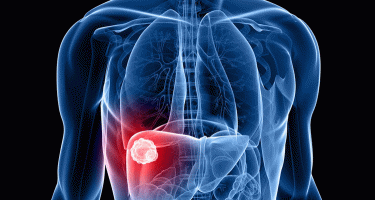
Hyper-progression recurrence (HPR) after surgery for hepatocellular carcinoma (HCC) is a particularly aggressive relapse pattern that leaves patients with few treatment options and poor survival prospects.
In a 12-year multicenter study of more than 3,000 patients, scientists developed highly accurate predictive models to identify those at greatest risk.
These tools, combined with biological insights, help physicians decide who should undergo surgery, who may need early adjuvant therapy, and who may face limited benefit from resection.
Importantly, the study also uncovered molecular hallmarks, including MYCN/HMGA2 co-expression, that drive the aggressive biology of HPR, offering new clues for personalised intervention and targeted therapy.
Liver cancer is one of the world's deadliest malignancies, ranking as the third leading cause of cancer-related death.
While advances in surgery have improved safety, recurrence after hepatectomy remains a formidable challenge.
Among the various patterns, hyper-progression recurrence (HPR) stands out for its speed and severity—multiple tumour nodules erupt within months, overwhelming the liver's capacity and leaving patients with few curative options.
Conventional staging systems fail to capture this risk, leaving clinicians without clear guidance.
Because of these challenges, it has become essential to develop predictive models and molecular insights that can help identify high-risk patients and guide more effective strategies.
A research team from Guangxi Medical University Cancer Hospital and partner centres conducted one of the largest studies to date on liver cancer recurrence, following 3,125 patients across eight hospitals.
Published online July 11, 2025, in Cancer Biology & Medicine, the work reveals a set of predictive nomogram and inference tree models capable of stratifying patients before and after surgery.
By combining clinical predictors with molecular profiling, the study not only delivers practical tools for doctors but also highlights MYCN/HMGA2 as a key molecular signature of aggressive recurrence.
Over 16,000 liver cancer patients were initially screened, with 3,125 meeting strict inclusion criteria.
Among them, 16.2% experienced HPR, often within the first four months post-surgery.
These patients had markedly lower survival rates and were almost entirely limited to palliative or supportive care.
Through statistical analysis, nine independent risk factors emerged, including young age, elevated alpha-fetoprotein, large tumours, multiple nodules, vascular invasion, microvascular invasion, high Ki67 index, incomplete tumour capsule, and postoperative complications.
A preoperative nomogram built from six of these predictors achieved striking accuracy, with an area under the curve exceeding 94%.
When combined with a conditional inference tree, the model effectively distinguished patients at very low, moderate, and very high risk, enabling tailored surgical decisions.
To extend this framework, a postoperative model incorporated all nine predictors and further guided the use of early adjuvant therapies.
Patients at high postoperative risk who received transcatheter chemoembolization or hepatic artery infusion therapy had improved outcomes compared to those without additional treatment.
At the molecular level, nearly 5,000 genes were differentially expressed in HPR tumours.
Enrichment of cell cycle pathways, immune exhaustion, and especially co-expression of MYCN and HMGA2 underscored the biological aggressiveness driving this recurrence type.
"Our findings move beyond observation to action," said Dr. Lunan Qi, senior author of the study.
"We now have reliable tools to predict which patients are likely to face this devastating recurrence and can adapt treatment plans accordingly. For some, surgery may not offer benefit, while others could gain from early adjuvant therapies. Equally important, the discovery of MYCN/HMGA2 co-expression gives us a molecular marker to pursue in future drug development. This dual approach—clinical prediction and biological understanding—brings us closer to precision oncology in liver cancer."
The study provides a roadmap for managing one of the toughest challenges in liver cancer care.
Preoperative models can help identify patients who may not benefit from surgery, reducing unnecessary risk, while postoperative models guide the timely application of adjuvant therapies.
This tiered strategy allows for more personalised treatment, improving the chances of longer survival and better quality of life.
At the same time, the identification of MYCN/HMGA2 as a marker of poor prognosis opens doors for new targeted therapies.
Together, these insights offer clinicians practical tools and scientists fresh directions to tackle aggressive liver cancer recurrence.
Source: China Anti-Cancer Association
We are an independent charity and are not backed by a large company or society. We raise every penny ourselves to improve the standards of cancer care through education. You can help us continue our work to address inequalities in cancer care by making a donation.
Any donation, however small, contributes directly towards the costs of creating and sharing free oncology education.
Together we can get better outcomes for patients by tackling global inequalities in access to the results of cancer research.
Thank you for your support.